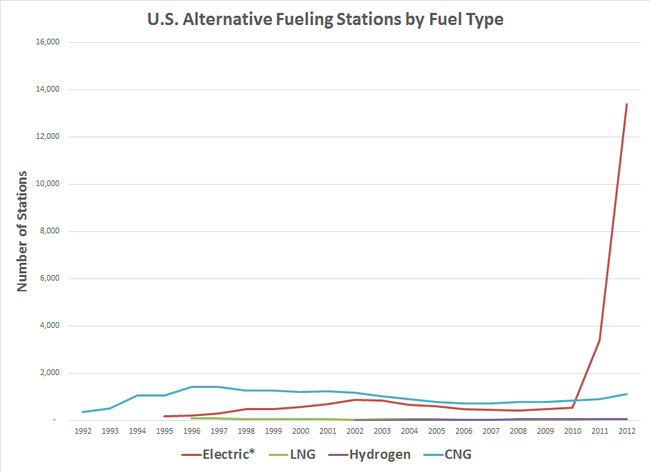Alternative fuel vehicle infrastructure
Alternative fuel vehicle infrastructure refers to the supporting infrastructure such as fueling stations and specialized support that are needed to run alternatively fueled vehicles. Gasoline stations, both with and without diesel, are abundant in OECD countries, but fueling for alternative fuel vehicles requires different infrastructure. This supporting infrastructure mainly includes fueling station and maintenance centers. Many gasoline stations could provide many of these alternatives as well, but don't yet. Fueling station makes the energy currency accessible to public and the technology can be used at more locations. In the U.S., the number of electric fueling stations have increased over the past few years (see figure 1), while hydrogen refueling stations and Natural gas refueling stations are limited. Figure below shows the growth in fueling stations for various technologies.[1] This is much less than the 121,000 gasoline stations in the US.[2][3] There are roughly 8 times as many traditional gasoline stations as AFV recharging stations at the moment, but that ratio will probably continue to drop.

References
- ↑ 1.0 1.1 U.S. Department of Energy. “Maps and Data”. Internet: http://www.afdc.energy.gov/data/categories/emissions--2. March 2011. [October 25, 2013]
- ↑ http://www.census.gov/prod/ec02/ec0244i14t.pdf accessed August 4th, 2014, although this is old data, the numbers don't change nearly as dramatically as the number of AFV stations.
- ↑ A blog post estimating the number of gas stations, accessed Aug 4th, 2014, http://blogs.redorbit.com/estimating-the-number-of-gas-stations-in-the-united-states/

